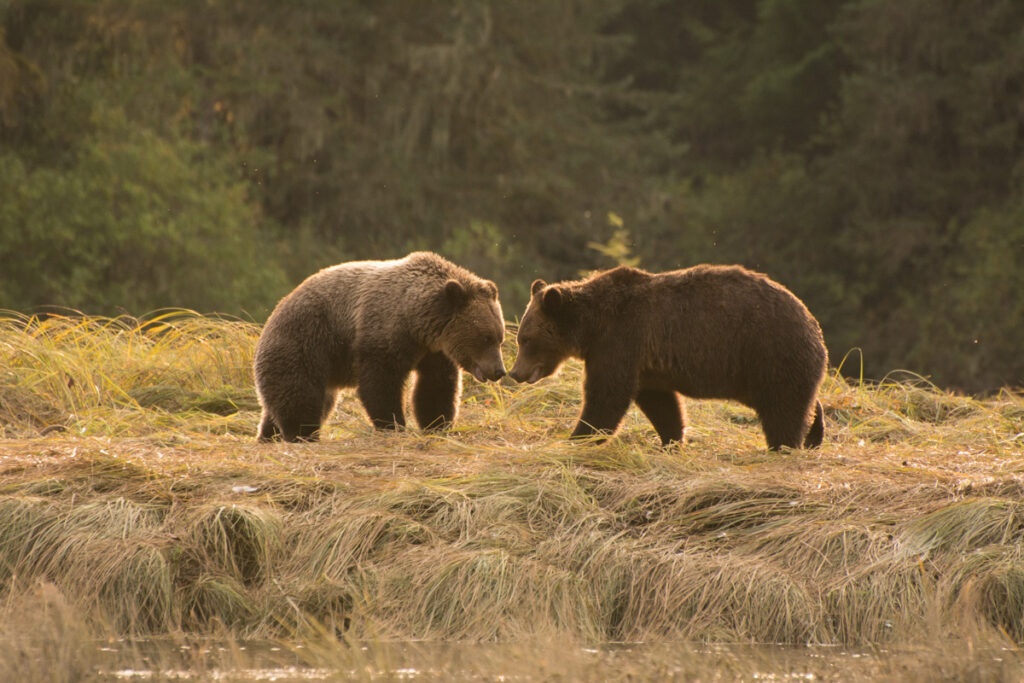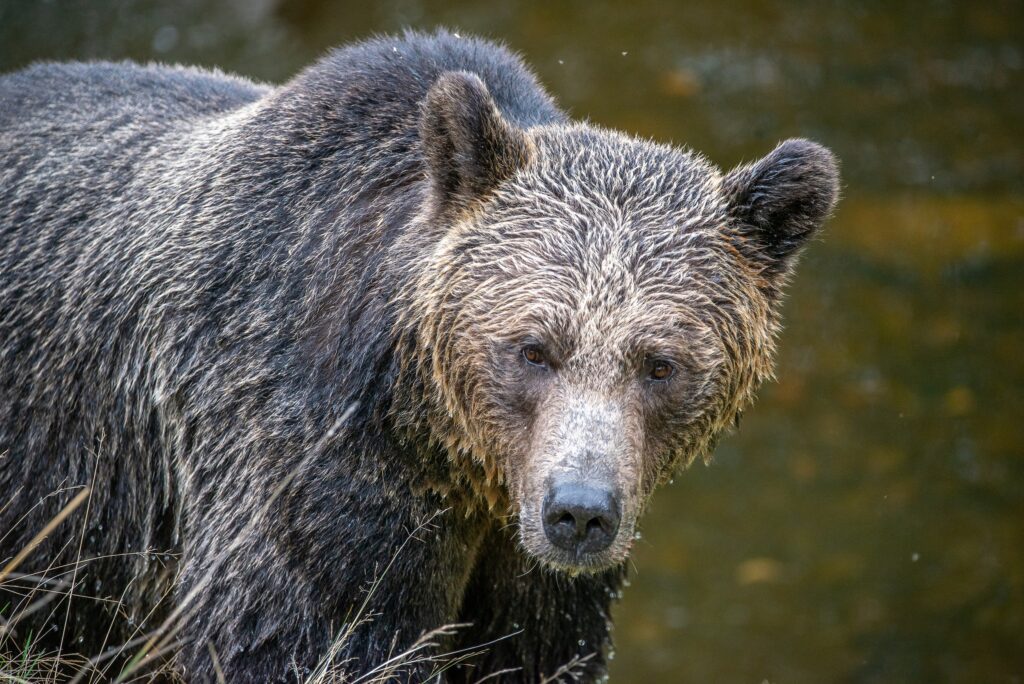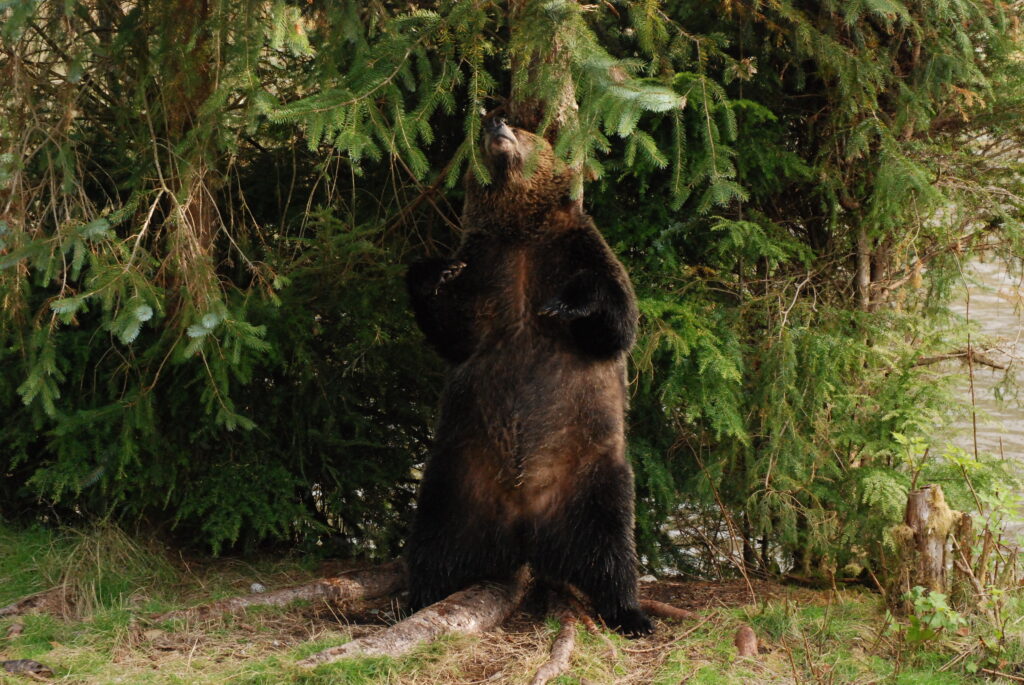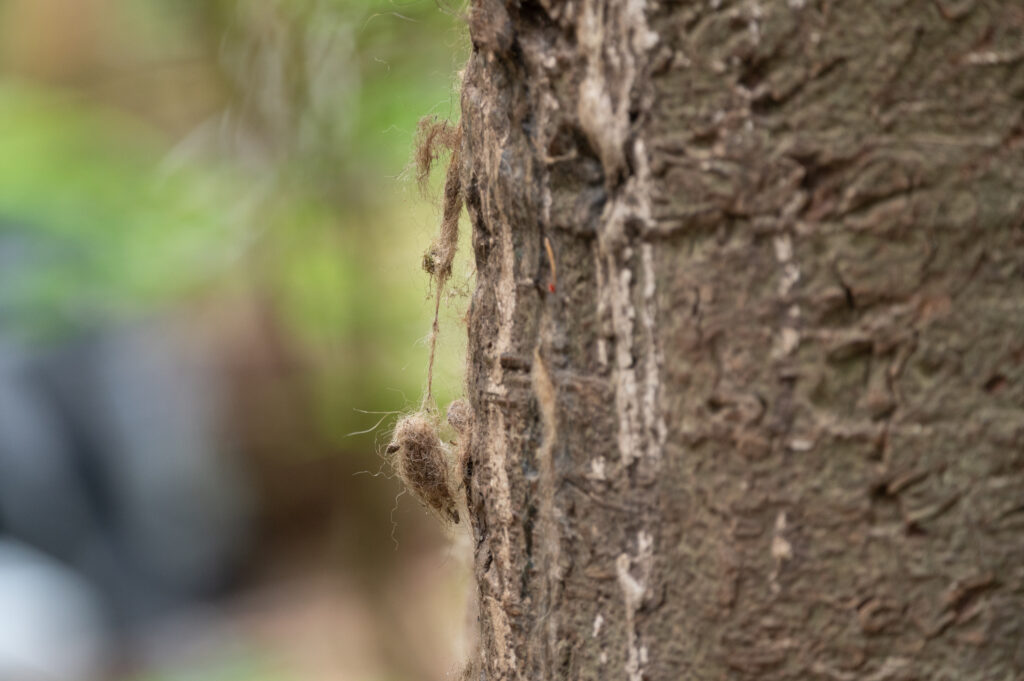Grizzly bears are no doubt one of North America’s most iconic forest dwelling species. They have large ranges, often overlapping with many other bears. However, bears being solitary for most of their lives prefer not to spend too much time negotiating space with another bear. Conflict can result in a physical confrontation, which may leave one or both bears injured or worse.

Scent communication among bears has been studied more thoroughly in the last several decades, but science still has a long ways to go before fully understanding the complexities of their olfactory capability. We do know that their sense of smell is extraordinary. The long nasal passage filled with bony protuberances called turbinates increases the surface area of the sinus, allowing for a greater sense of smell. Bears also have enlarged olfactory bulbs allowing for more nerve tissue to be dedicated to smell.

More recently, research has been directed towars ways in which bears can communicate by using chemical markers on objects, most commonly trees and trails, within their habitat. Scent-marking trees or rub-trees have varying levels of use throughout bear ranges and throughout the year. For example, in the spring time it is more common to see adult males and adult females spending more time around scent-marking trees. Research suggests these trees are somewhat of a grizzly bear bulletin board or classifieds. Breeding male bear walks up to tree, investigates tree, notices another males scent, then rubs on the tree to add his own scent, then continues down the trail. Breeding female bear walks up to tree, investigages scent, notices recent male scent, continues down the trail pursueing that scent. You get the point from here.

There is more usage during the autumn months by all age/sex demographic of bears. Near high quality salmon fishing sites, there is high traffic and high bear density. The usage by all demographics of bears during this time period could be more to do with negotiating space and letting other bears know you’re in the area. Close encounters with other bears during the fall is a guarentee and perhaps the more you advertise your presence, the less likely you will surprise another nearby bear.

Bear scent communication is endlessly fascinating. Thus far, all bear species have some form of scent communication method that science is just beginning to understand. To emphasize a bears reliance on their sense of smell in day-to-day movements, I recall sitting in a small boat in an estuary with a group of travelers I was guiding from Knight Inlet Lodge, BC. A bear emerged from the forest only 150 feet from us, paused and stared at us, sniffing in the air, and then proceeded to walk all the way around us in a semi-circle until it was perfectly downwind from us. Still 150 feet from us, it paused, stared, held it’s nose up for sniff of the air, and as if only after catching our scent did the bear trust or recognize what we were. Bears have good eyesight, but a bears nose knows.
